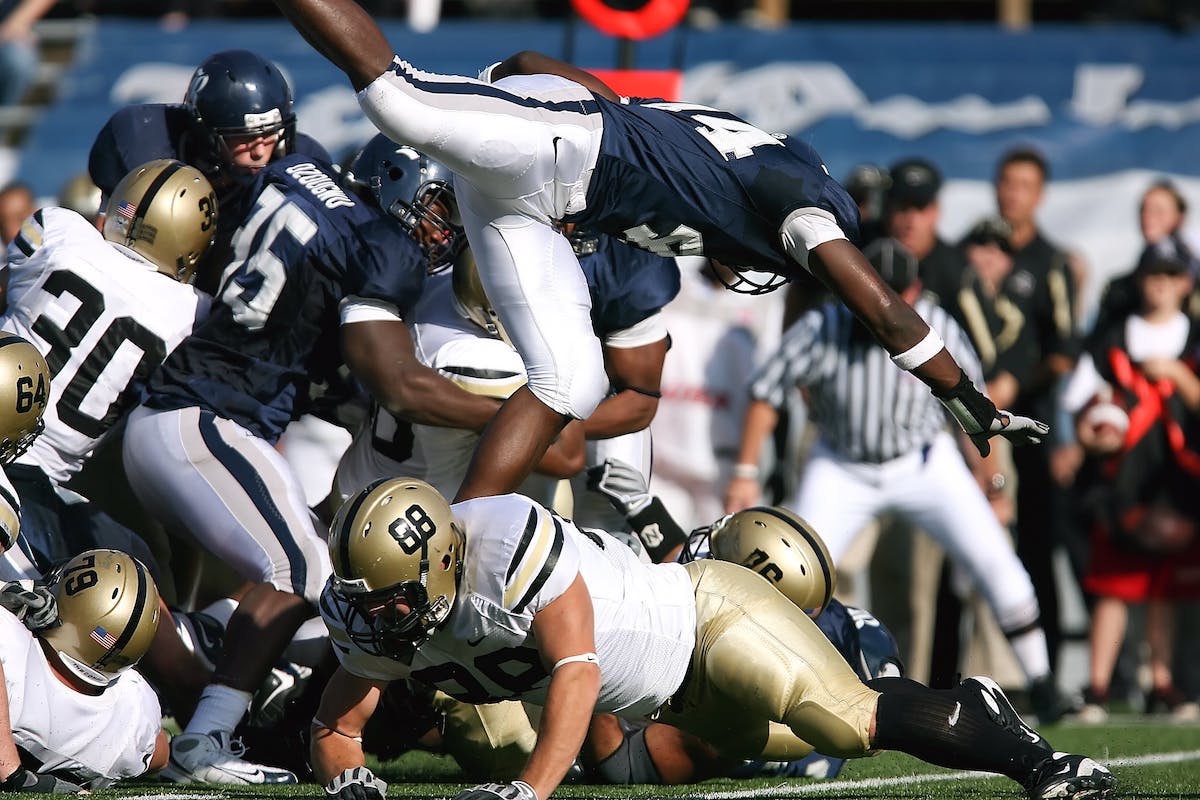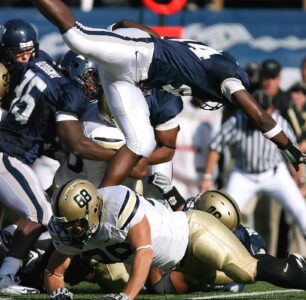Exploring the Dynamic Differences and Fascinating Similarities Between Two Iconic Sports
In the realm of physical prowess and team-based athleticism, few sports command the attention and admiration quite like American football and Rugby. Both sports boast rich histories, passionate fan bases, and a relentless intensity on the field. Yet, beneath the surface, these two titans of the sporting world diverge in key aspects, from their origins and rules to their styles of play and cultural significance. Join us as we delve into the intricate tapestry of American football vs Rugby, unraveling their unique characteristics and celebrating the shared spirit of competition that unites players and fans alike.
Origins and Evolution
American Football: A Tale of Gridiron Glory
American football traces its roots back to the mid-19th century in the United States. With a blend of soccer and rugby influences, the sport began to take shape on college campuses, evolving from chaotic, rugby-style scrimmages into a structured game defined by complex strategies and specialized positions. The iconic oval ball, distinctive helmets, and padded uniforms became emblematic of American football, setting it apart from its predecessors and laying the foundation for a uniquely American pastime.
Rugby: Forged on the Fields of England
Across the pond, Rugby emerged in the 19th century in the town of Rugby, Warwickshire, England. Legend has it that during a game of soccer in 1823, a player named William Webb Ellis famously picked up the ball and ran with it, thus birthing the rough-and-tumble sport of Rugby. Unlike its American counterpart, Rugby retained a more rugged, minimalist aesthetic, with players eschewing helmets and pads in favor of raw grit and determination. Over time, Rugby spread its influence worldwide, captivating audiences with its blend of athleticism and camaraderie.
Rules and Gameplay
American Football: Precision and Power
Central to American football is its meticulously structured gameplay, characterized by stop-and-start action and strategic maneuvers. Each team fields eleven players at a time, with the objective of advancing the ball down the field and scoring touchdowns or field goals. The game unfolds in a series of downs, with teams alternating between offense and defense, and coaches devising elaborate playbooks to outwit their opponents. From quarterback sacks to bone-crushing tackles, American football thrives on explosive athleticism and calculated aggression.
Rugby: Fluidity and Finesse
In contrast, Rugby embraces a more fluid and continuous style of play, epitomized by its absence of downs and set plays. Players pass, kick, and run with the ball in a relentless pursuit of territory and scoring opportunities. The absence of protective gear fosters a sense of vulnerability and resilience, as players must endure the physical rigors of scrums, rucks, and mauls without the cushioning of pads. While the rules of Rugby may seem simpler on the surface, its emphasis on endurance, teamwork, and adaptability demands a high level of skill and athleticism from its participants.
| Aspect | American Football | Rugby |
|---|---|---|
| Field Dimensions | 100 yards long, 53.3 yards wide (including end zones) | Maximum 100 meters long, 70 meters wide |
| Scoring | Touchdown (6 points), Field Goal (3 points), Safety (2 points), Extra Point (1 or 2 points) | Try (5 points), Conversion (2 points), Penalty Kick (3 points), Drop Goal (3 points) |
| Forward Pass | Allowed | Not allowed (except for kick-passes) |
| Tackling | Legalized body checking/tackling with specific rules | Tackling allowed, but must be below the shoulders and use arms to grip |
| Protective Gear | Helmets, shoulder pads, thigh pads, knee pads, etc. | Mouthguard, optional headgear, minimal padding |
| Stoppage of Play | Occurs after each play (down) | Continues unless a penalty or infringement occurs |
| Offside Rule | Strictly enforced | Less strict, players must be behind the ball carrier or kicker |
| Scrums and Lineouts | Not part of gameplay | Integral part, used to restart play after certain stoppages |
| Possession | Team maintains possession until scoring or turnover | Possession changes frequently due to turnovers and penalties |
| Number of Players | 11 players per team on the field at a time | 15 players per team on the field at a time |
Physicality and Endurance
American Football: High-Impact Collisions
One cannot discuss American football without acknowledging its reputation for bone-jarring collisions and high-impact tackles. The sheer force of players colliding at full speed can be both awe-inspiring and alarming, showcasing the immense physicality inherent in the sport. However, this intensity comes at a cost, with players facing a heightened risk of injuries, including concussions, broken bones, and chronic traumatic encephalopathy (CTE). Despite advancements in player safety and rule changes aimed at reducing risk, the inherent dangers of American football remain a topic of concern and debate.
Rugby: Test of Endurance and Toughness
In Rugby, physicality is not confined to isolated moments of contact but permeates every aspect of the game. From the relentless grind of scrums to the relentless pursuit of the ball, players must possess both strength and stamina to excel on the Rugby pitch. While injuries are an inevitable part of the sport, Rugby places a greater emphasis on technique and skillful execution, mitigating some of the risks associated with high-velocity collisions. Moreover, the absence of protective gear fosters a sense of camaraderie and mutual respect among players, who must rely on trust and teamwork to navigate the rigors of the game.
Cultural Impact and Global Reach
American Football: Icon of American Identity
In the United States, American football transcends mere sport, serving as a cultural touchstone that unites communities and defines generations. From Friday night lights to the spectacle of the Super Bowl, football permeates every facet of American life, shaping traditions, rituals, and collective identities. The NFL, with its multi-billion-dollar industry and legion of loyal fans, stands as a testament to the enduring power of the gridiron game, while college football holds a special place in the hearts of alumni and enthusiasts alike.
Rugby: A Global Brotherhood
While Rugby may lack the commercial juggernaut of American football, its global footprint is undeniable, spanning continents and cultures with its message of unity and sportsmanship. From the rugged fields of New Zealand to the bustling streets of Tokyo, Rugby unites players and fans from all walks of life under a common banner of respect and camaraderie. The Rugby World Cup stands as the pinnacle of the sport, showcasing the talent and tenacity of teams from around the world and inspiring a new generation of athletes to embrace the spirit of Rugby.
Pads vs. No Pads: The Debate on Player Protection
In the realm of American football and Rugby, perhaps one of the most striking differences lies in the approach to player protection, specifically regarding the use of pads and protective gear.
American Football: Safety in Layers
In American football, the use of helmets, shoulder pads, thigh pads, and other protective gear is standard practice. These layers of padding are designed to absorb impact and reduce the risk of injury during high-velocity collisions. While the presence of pads offers a sense of security for players, it also fosters a more aggressive style of play, with athletes often relying on their equipment to absorb the brunt of physical contact. However, the effectiveness of pads in preventing injuries, particularly concussions, remains a subject of debate, as studies have shown that helmet-to-helmet collisions can still result in traumatic brain injuries.
Rugby: Embracing Vulnerability
In stark contrast, Rugby players eschew the use of protective gear, relying solely on their natural athleticism and technique to navigate the physical demands of the game. The absence of pads fosters a sense of vulnerability and accountability among players, who must rely on proper tackling form and spatial awareness to avoid injury. While this minimalist approach may seem daunting to outsiders, Rugby players embrace the inherent risks of the sport, viewing it as a test of courage and resilience. Moreover, the absence of pads fosters a deeper sense of connection and camaraderie among teammates, who share a mutual understanding of the sacrifices required to excel on the Rugby pitch.
Finding Common Ground
Despite their differences, both American football and Rugby grapple with the ongoing challenge of player safety and injury prevention. While pads offer a tangible layer of protection in American football, they also come with their own set of limitations and risks. Conversely, the absence of pads in Rugby fosters a more open and fluid style of play but exposes players to a higher risk of injury. Ultimately, the debate over pads vs. no pads underscores the complex interplay between safety, athleticism, and tradition in the world of sports, challenging athletes and administrators alike to strike a balance between protection and performance.
American Football vs Rugby
In the arena of American football vs. Rugby, there are no winners or losers—only a celebration of the diverse tapestry of human athleticism and spirit. Whether it’s the precision of an American quarterback’s spiral or the poetry of a Rugby player’s sidestep, both sports offer a glimpse into the boundless potential of the human body and the unbreakable bonds forged through competition. So, whether you’re donning a helmet and pads or lacing up your boots, remember that the true essence of sport lies not in victory or defeat, but in the journey of self-discovery and shared experiences that unite us all.
Disclaimer: The links provided below offer further insights into the world of American football and Rugby. However, inclusion in this article does not imply endorsement or affiliation.

